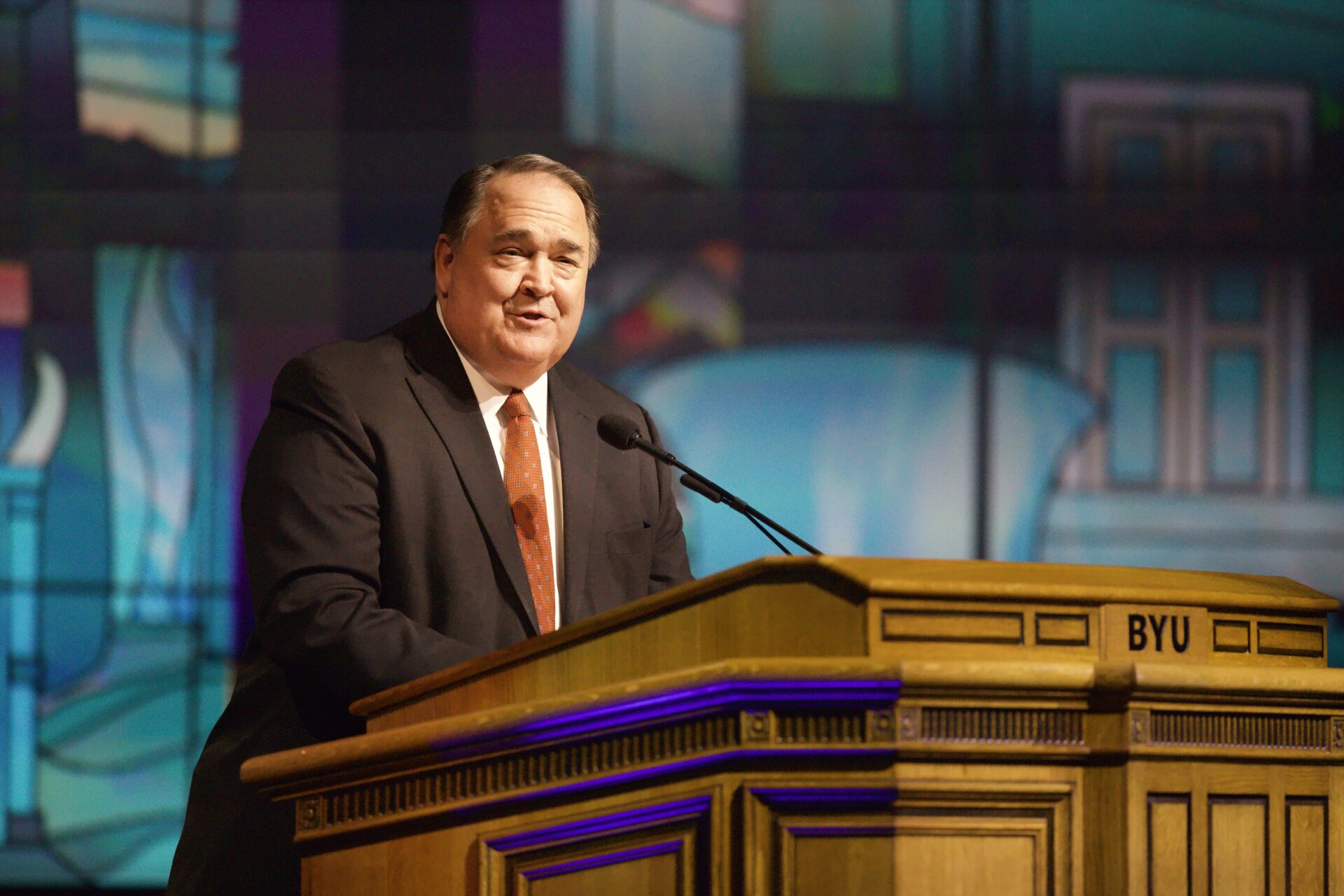
Elder Allen D. Haynie of the Seventy discussed the importance of keeping Jesus Christ at the center of temple worship and wearing the temple garment with Christ in mind during his devotional address on Oct. 10.
Elder Haynie encouraged those who have not been endowed to pray and ask if the time is right for them to receive their endowment. He also spoke about the importance of finding deeper meaning in temple worship.
“Just attending the temple is not enough. Something needs to happen to us because of our spending time in the House of the Lord. We need to leave His House different than when we entered, but that result is not always easy to achieve,” he said.
He then addressed those who are attending the temple regularly but feel there is more meaning they are not finding.
“Please know that the Lord loves you for your faithfulness in coming to His House even if you have not yet had the experience for which you have hoped, fasted and prayed,” Elder Haynie said.
To find more meaning in the temple, Elder Haynie shared three things he learned from a book written by Truman G. Madsen called “The Temple: Where Heaven Meets Earth”. In this book, Madsen described things he learned were preventing him from experiencing the fullness of the temple.
First, Madsen found he was not spending enough time learning about the temple from the scriptures.
“For those who are seeking to understand and connect with temple ordinances in a more meaningful way, spend more time reading the scriptures that talk about the temple and temple ordinances,” Elder Haynie said.
Second, Madsen felt he was “afflicted with various kinds of unworthiness and not too anxious to change all that.”
To receive the blessings of the temple, Elder Haynie said repentance is essential. He reminded devotional listeners of the importance of the sacrament in the repentance process.
“I believe that approaching the sacrament with greater reverence is essential if we desire to become more worthy of temple revelation. The two covenant moments, that of the sacrament and the temple, are inextricably connected. Both point us toward the Savior and His atoning sacrifice,” he said.
The third idea Elder Haynie shared from Madsen’s book was that Madsen “had a built-in hostility to ritual and symbolism.”
“It is okay to admit that when we first experienced the ordinances of the temple, the ritual and symbolic aspects of the ordinances were a little confusing and may have made us feel a little uncomfortable. But that initial reaction doesn’t mean we should abandon our efforts to understand what it is the Lord is trying to teach us or more importantly bestow upon us,” Elder Haynie said.
Elder Haynie encouraged students to attend the temple more often and to go to the temple with the intention of seeking Jesus.
“If we invite the Spirit into our hearts and minds, I testify that we will discover that the ritual and symbolic aspects of the temple ordinances are in fact very familiar to us and we will recognize that the power of godliness that flows into our lives as we honor them ensures our ability to return and dwell in the presence of our Father in Heaven,” he said.
In addition to Madsen’s three challenges to finding meaning in the temple, Elder Haynie added his own fourth challenge.
“We too often ignore the reality that all the symbolism in the temple points us toward Jesus Christ, His atonement and His role in bringing to pass the immortality and eternal life of man,” Elder Haynie said. “Many of the challenges people have with not feeling what they want to feel in the temple stem from their failure to seek Jesus while participating in temple ordinances.”
He spoke of scriptural references to sacred clothing, meant to remind God’s children of their covenants, and their relation to the sacred temple garments worn by endowed members of The Church of Jesus Christ of Latter-day Saints.
Elder Haynie emphasized the importance of the temple garment and shared the significance of the giving of a garment by God to His covenant children. He explained receiving and wearing the garment should not be considered ordinary.
“It is a most sacred exchange,” he said.
Elder Haynie also shared the words of President Russell M. Nelson in regards to the temple garment.
Quoting President Nelson, he said, “Your garment is symbolic of the veil (of the temple); the veil is symbolic of the Lord Jesus Christ. So when you put on your garment, you may feel that you are truly putting upon yourself the very sacred symbol of the Lord Jesus Christ — His life, His ministry and His mission, which was to atone for every daughter and son of God.”
Elder Haynie concluded his devotional address by testifying that as students prepare and purify themselves, Jesus will reveal Himself to them in the temple in “powerful and personal ways.” He also shared consistently honoring and wearing the temple garment will enable students to better remember Jesus and obtain spiritual protection.




